Goritsky Monastery: Baroque masterpiece in Pereslavl-Zalessky
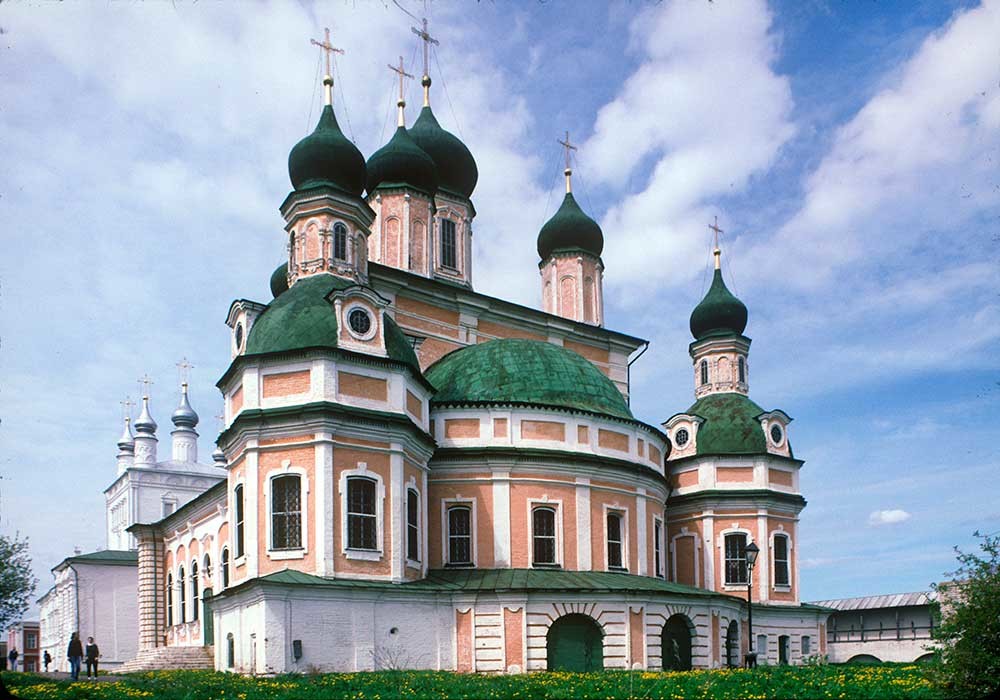
Pereslavl-Zalessky. Goritsky Dormition Monastery. Dormition Cathedral, southeast view, May 1996
William BrumfieldAt the beginning of the 20th century, the Russian chemist and photographer Sergei Prokudin-Gorsky developed a complex process for color photography (see box text below). Inspired to use this new method to record the diversity of the Russian Empire, he undertook numerous journeys over a period from 1903 to 1916.
His vision of photography as a form of education and enlightenment was demonstrated with special clarity through his photographs of architecture in historic towns northeast of Moscow that form the heart of the Golden Ring. Prominent among them is Pereslavl-Zalessky (current population 40,000), which Prokudin-Gorsky visited in 1911. My work in Pereslavl-Zalessky has covered a period from 1980 to 2012
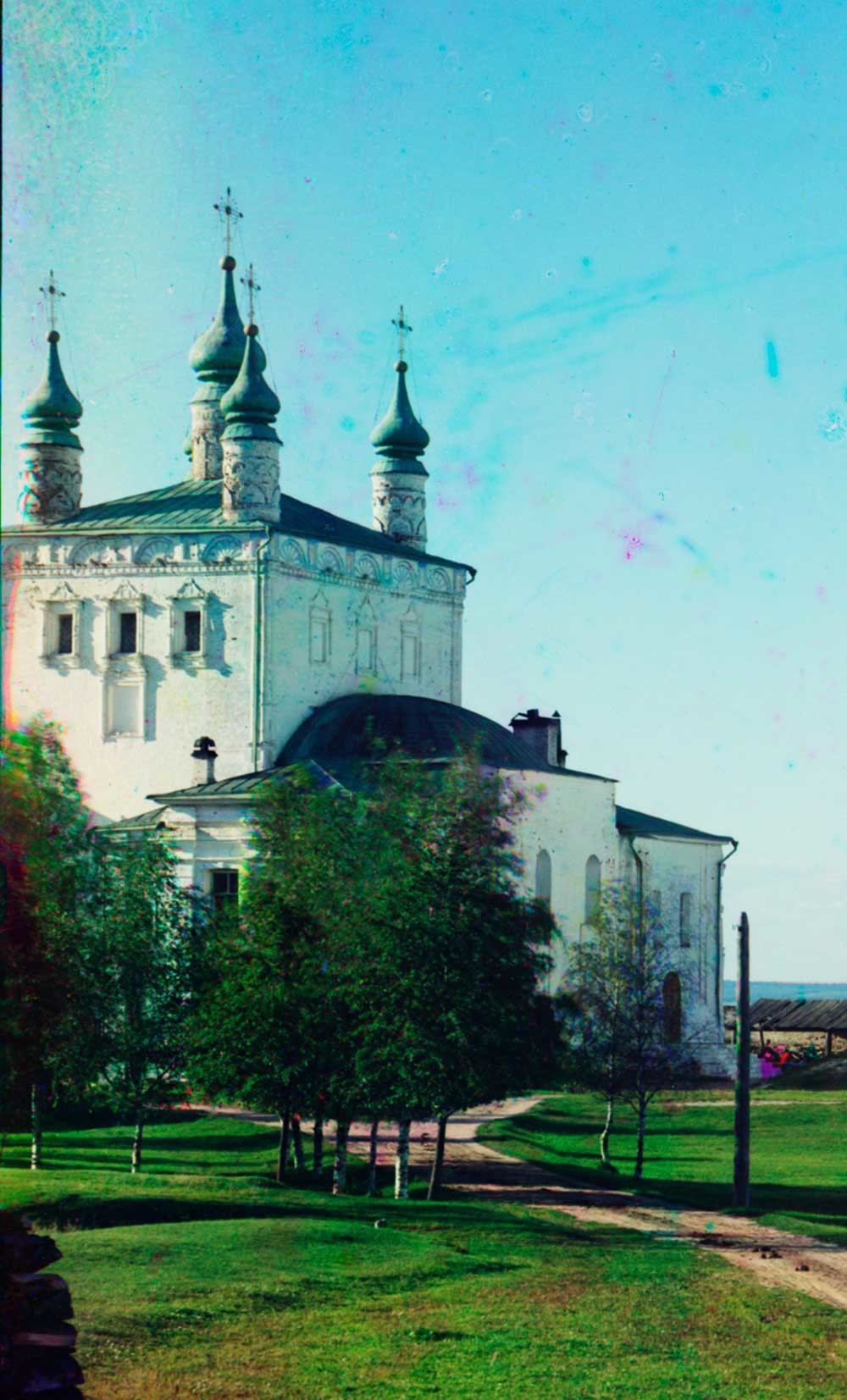
Goritsky Dormition Monastery. Church of All Saints, southeast view. Summer 1911
Sergei Prokudin-GorskyA distinguished history
Among the several monasteries that remain in this ancient town, the most picturesque is the Goritsky Dormition Monastery, situated on a bluff overlooking Lake Pleshcheevo. (“Goritsky” is related to a word for little hill.) Although relatively small, the lake played an outsized role in Russian history, including its use for sailing exercises by the young Peter the Great

On the left: Church of All Saints, east view. June 1995. On the right: Church of All Saints, south facade. July 2012
William BrumfieldSt. Sergius had considerable influence as the spiritual adviser to Grand Prince Dmitry Ivanovich of Moscow (1350-89). The monk Dmitry assumed a similar role with the prince’s children. On the advice of Sergius, Dmitry left Pereslavl for the Vologda region, where in 1371 he founded the Savior Monastery, subsequently known as Savior-
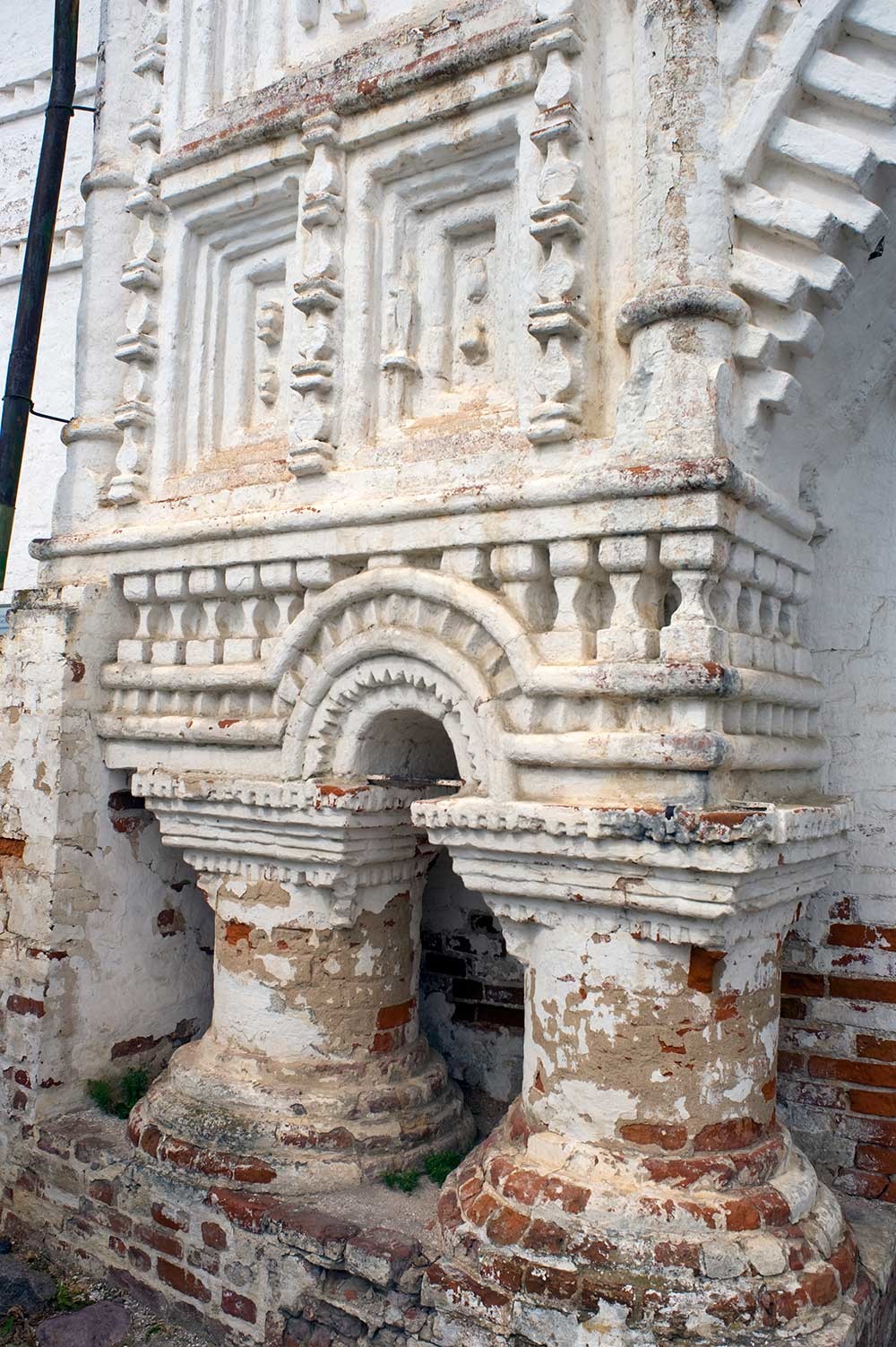
East Gate, east facade detail. July 2012
William BrumfieldAt that time, Goritsky Monastery consisted of log structures and could not offer serious resistance. Fortunately, Princess Eudoxia was able to descend to the lake shore with some of her
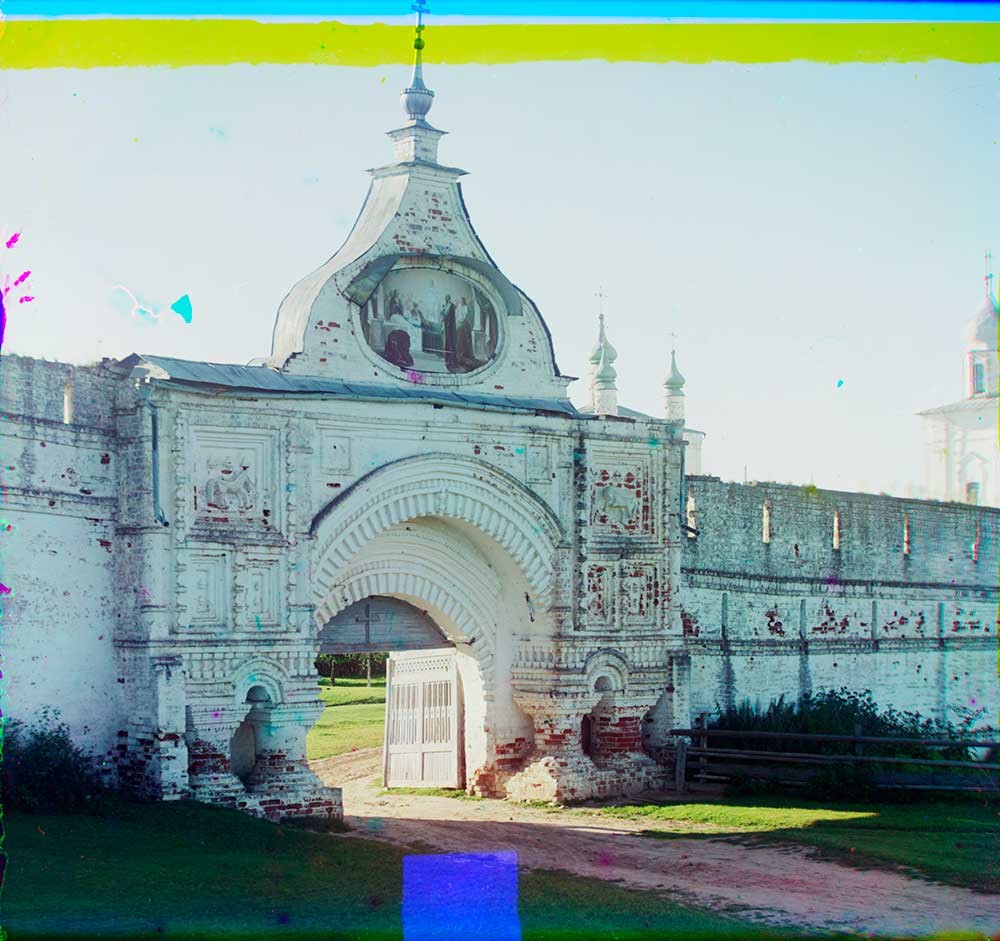
East Gate, east view. Summer 1911
Sergei Prokudin-GorskyIn the 15th century, the Goritsky Monastery became an important spiritual center. Its most notable abbot (hegumen) toward the end of the century was Daniil, known for his charity to the poor and homeless. In the early 16th century, Daniil founded the nearby Trinity Monastery, patronized by Tsars Vasily III and Ivan IV (the Terrible).
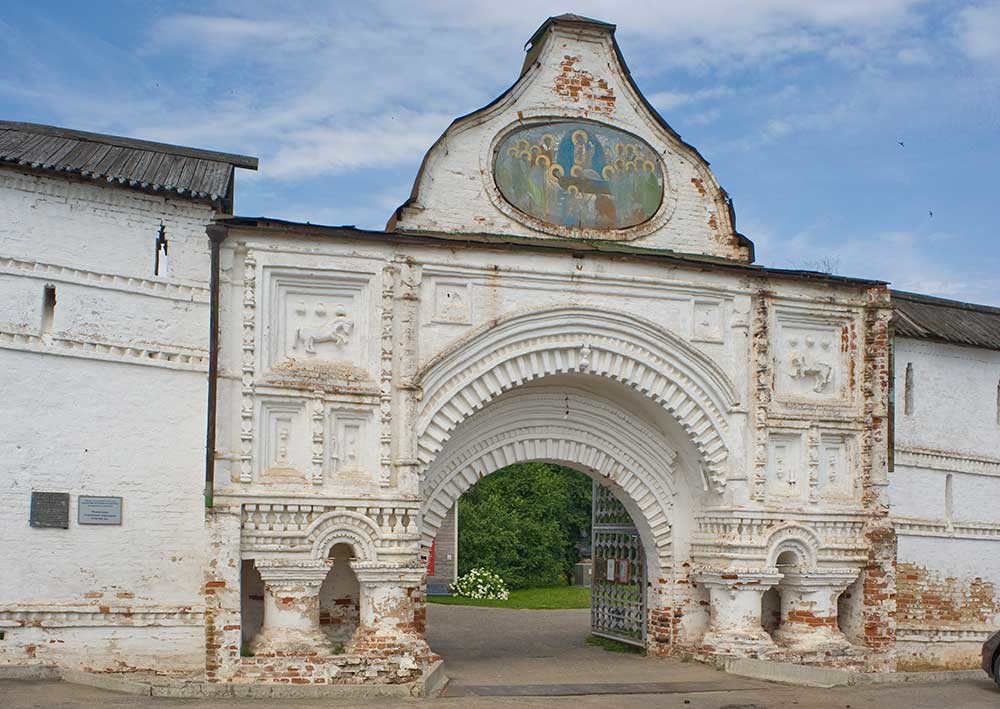
East Gate, east view. July 2012
William BrumfieldOver the course of the 17th century the Goritsky and other local monasteries were restored after the widespread destruction inflicted by the dynastic crisis known as the Time of Troubles. At Goritsky Monastery, the earliest surviving brick structures include the Church of All Saints, rebuilt in the late 17th century on the site of a smaller 16th-century church. It appears on the left in Prokudin-Gorsky’s view of the central ensemble.

Dormition Cathedral, south view. Left: Church of All Saints. Summer 1911
Sergei Prokudin-GorskyA distinctive part of the Goritsky Monastery is its walls, rebuilt in an imitation fortress style in the late 17th century. Near the southeast corner of the walls are two gate structures, fancifully decorated with molded brick patterns and figures. The main Holy Gate (on the south) supports the small church of St. Nicholas, completed at the end of the 17th century.
The East Gate is crowned with a pediment that contains a painting of the Dormition of the Virgin, to which the monastery is dedicated. Visible in Prokudin-Gorsky’s photograph, the image was effaced in the Soviet period but has now been repainted, as my 2012 photograph shows.
Elevation and expansion
An ecclesiastical reorganization during the reign of Empress Elizabeth led to the creation of a wealthy Pereslavl diocese in 1744. Goritsky Monastery, which had been severely damaged by fire in 1722, was transformed into the residence of the archbishop, an elevated status that brought resources for a rebuilding of its churches.
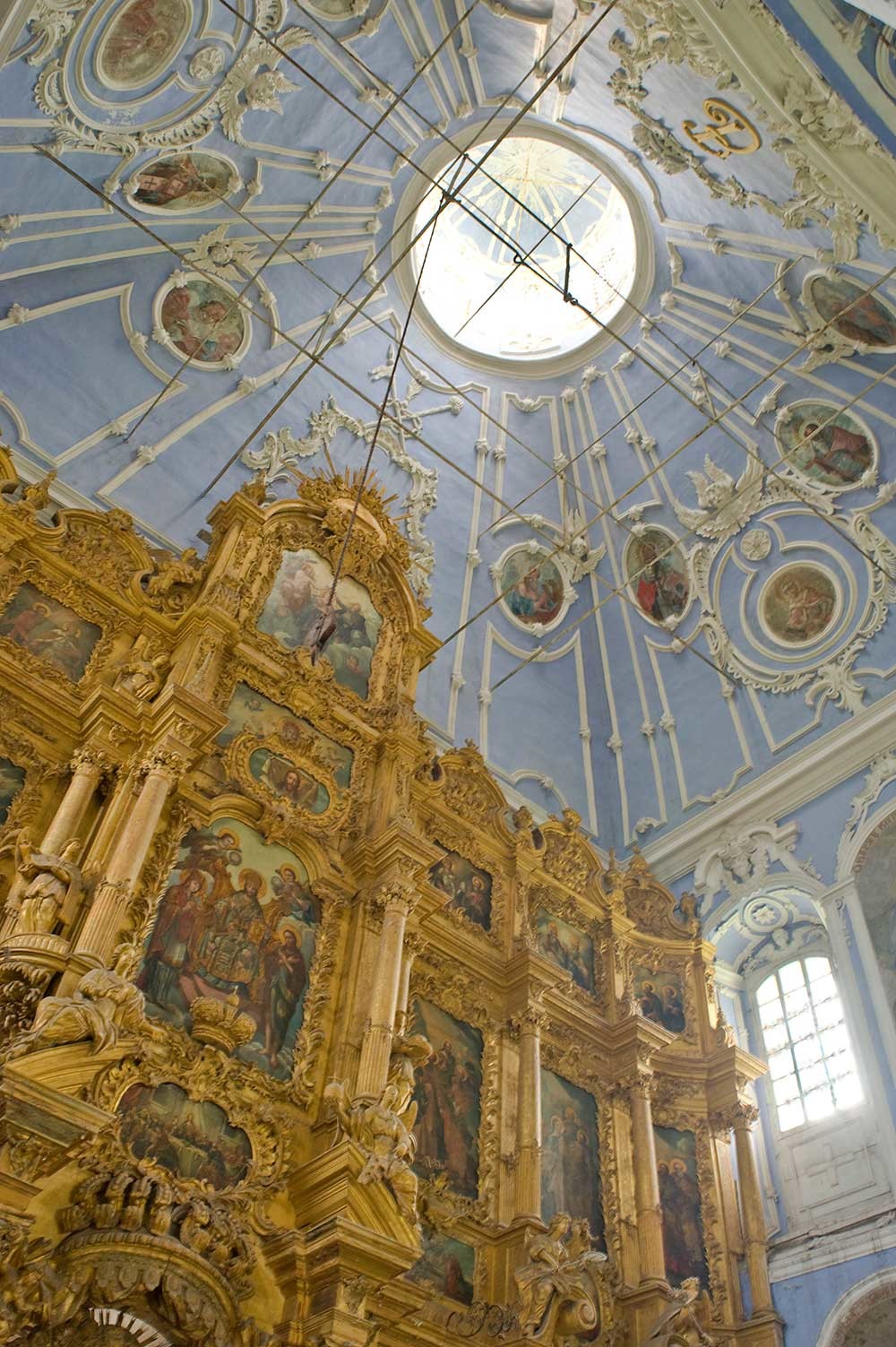
Dormition Cathedral. Interior with upper tiers of icon screen. July 2012
William BrumfieldThe building campaign was guided by Ambrose Zertis-Kamensky, who served as archbishop from 1753 to 1761. A well-educated cleric, he intended to expand Goritsky Monastery in a magnificent Baroque style. The most imposing result is the Cathedral of the Dormition of the Virgin, begun in the early 1750s and completed in 1761 to replace a church built in the 1520s. On the exterior, its design shows a simplified mixture of Baroque and neoclassical elements.
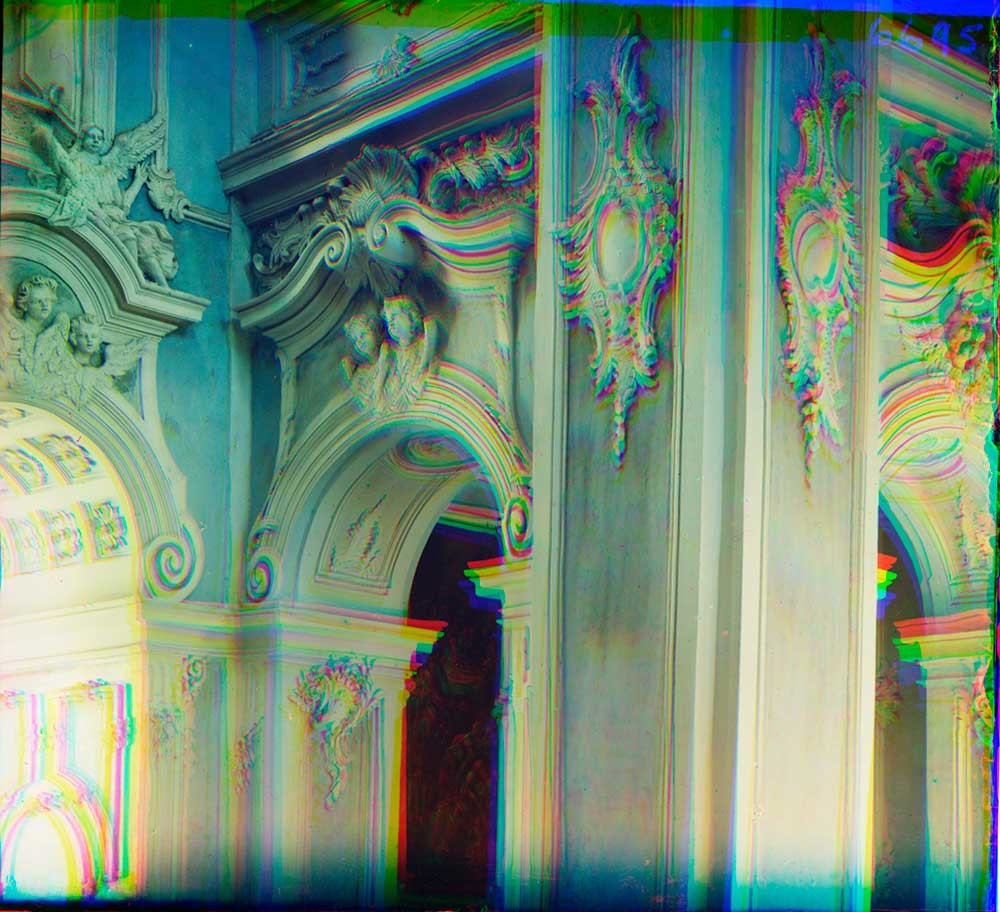
Dormition Cathedral. Interior, decorative detail. Summer 1911
Sergei Prokudin-GorskyOn the interior, however, the cathedral displays a lavish late Baroque decorative style. The magnificent icon screen is of special note, yet Prokudin-Gorsky photographed only a detail of this main space. Because of the drop mechanism of his three-exposure process, the large camera had to remain on a level surface and could not be tilted to capture the upper reaches of church interiors. He was, however, able to take an exquisite photograph of the icon screen in the south chapel.
During the reign of Catherine the Great, capricious fate brought a halt to plans for expanding Goritsky Monastery. In 1788, the Pereslavl diocese fell in status through another ecclesiastical reorganization, and what remained of the Baroque ensemble was gradually despoiled during the 19th century
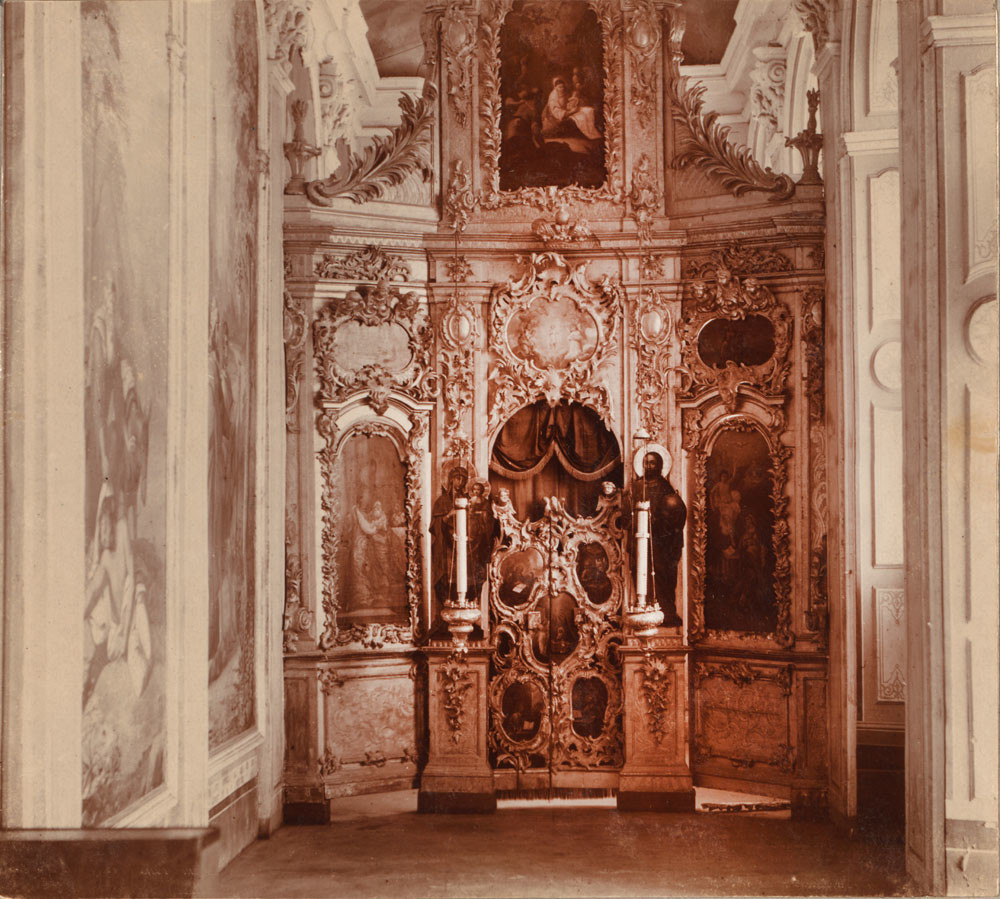
Dormition Cathedral. South chapel (Annunciation), view toward icon screen. Summer 1911.
Sergei Prokudin-Gorsky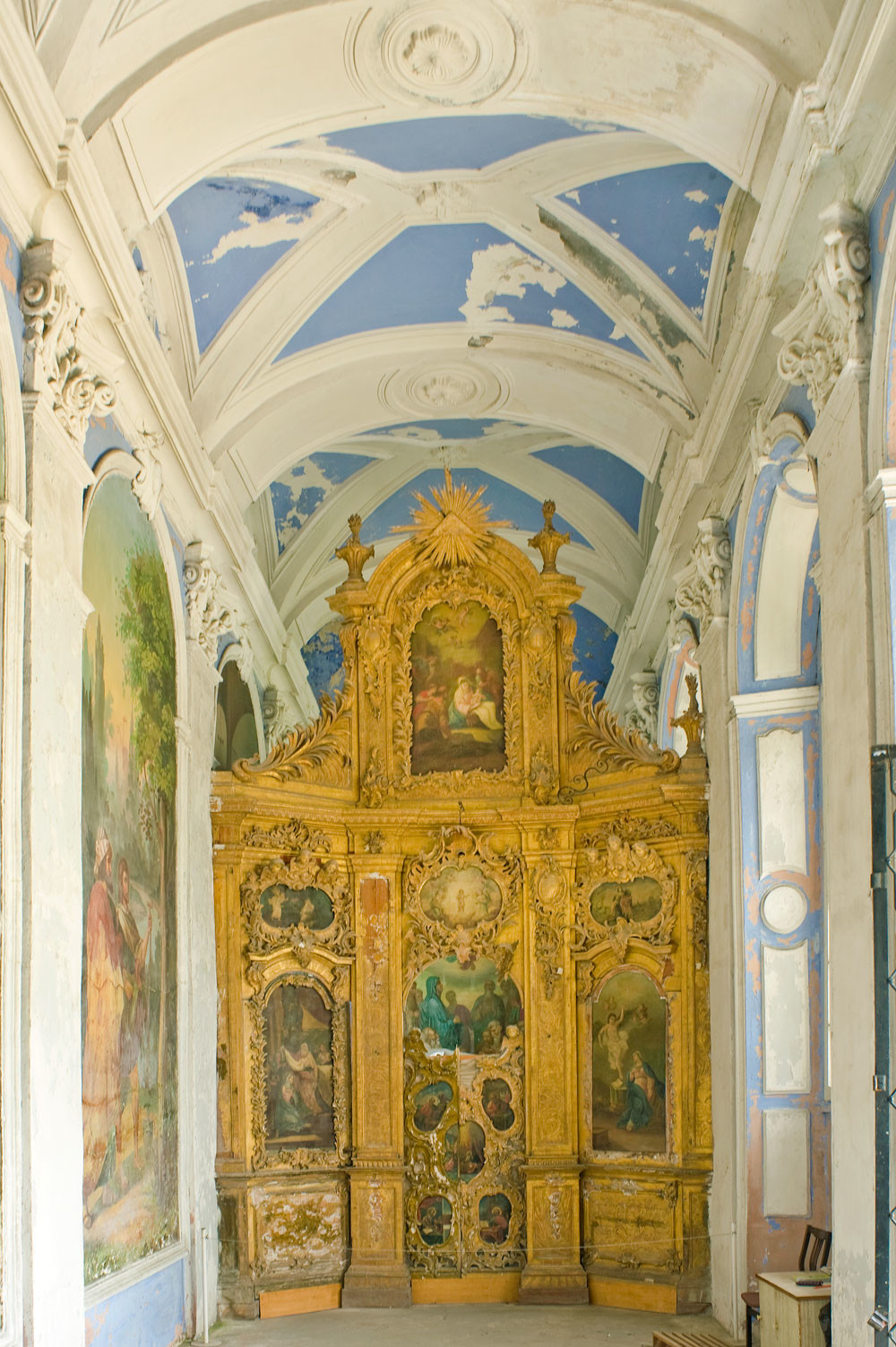
Dormition Cathedral. South chapel (Annunciation), view toward icon screen. July 2012
William BrumfieldIn the early 20th century the Russian photographer Sergei Prokudin-Gorsky devised a complex process for color photography. Between 1903 and 1916 he traveled through the Russian Empire and took over 2,000 photographs with the process, which involved three exposures on a glass plate. In August 1918, he left Russia and ultimately resettled in France with a large part of his collection of glass negatives. After his death in Paris in 1944, his heirs sold the collection to the Library of Congress. In the early 21st century the Library digitized the Prokudin-Gorsky Collection and made it freely available to the global public. A number of Russian websites now have versions of the collection. In 1986 the architectural historian and photographer William Brumfield organized the first exhibit of Prokudin-Gorsky photographs at the Library of Congress. Over a period of work in Russia beginning in 1970, Brumfield has photographed most of the sites visited by Prokudin-Gorsky. This series of articles will juxtapose Prokudin-Gorsky’s views of architectural monuments with photographs taken by Brumfield decades later.
If using any of Russia Beyond's content, partly or in full, always provide an active hyperlink to the original material.
Subscribe
to our newsletter!
Get the week's best stories straight to your inbox